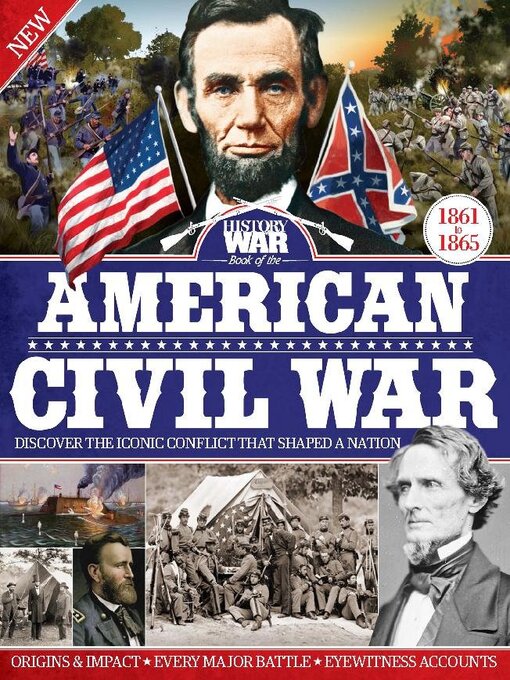More than 150 years after the end of the American Civil War, the story of America’s bloodiest conflict remains a potent one – a defining period in the formation of the United States as we know it today. In this bookazine we explore the American Civil War through investigating its key events, significant battles and its most influential figures. Through expert analysis, a wealth of authentic artefacts, spectacular photography, and eyewitness accounts, we’ll deliver a fascinating insight into a conflict that continues to profoundly impact the world we live in. Featuring: Secession Triggers War - Discover the key actions that triggered the war. Clash of Armies - Witness historic battles of Civil War in 1862. Grant, Sherman and Total War - Uncover the battles that left the end of the war in sight. Collapse of the Confederacy - Uncover the events that resulted in surrender.
HISTORY WAR Book of the AMERICAN CIVIL WAR
Foreword
Introduction • As America expanded across the West, the future of slavery split churches, political parties, and eventually the nation itself. It took a Civil War and more than 625,000 dead to decide the fundamental proposition that all men are created equal.
The State of the Nation • In the four decades after the War of 1812, the United States experienced profound changes in its population, economy, boundaries, and social relations. New states joined the union at a rate of almost one every three years. By 1855, the country had more cities with at least 150,000 residents than any other nation on Earth.
A Question of Union • As America’s population grew and people moved west, the driving forces in politics were domestic issues and personal rivalry, complicated by conflicts between federal power and the rights of individual states. The War with Mexico increased political divisions along sectional lines.
Slavery Divides the Country • In the 30 years prior to the Civil War, churches, political parties, and families split on the nature of the American republic and the status of slavery. Victory over Mexico fixed the national boundaries, but the question of how new lands would be organized—free or slave—fractured national institutions.
The Fury of Abolition • The great majority of prominent abolitionists were white, many of them pastors who were loath to preach a doctrine of violent insurrection. With their personal experience and hatred of slavery, black abolitionists challenged these white abolitionists who preached pacifism and patience.
The Rise of the Republican Party • Founded to oppose the extension of slavery, the Republican Party in 1855 had organized members in fewer than half the Northern states, most of which often ran third to the Democrats in elections. Less than a year later, the Republicans had transformed themselves from a disorganized coalition into a powerful sectional party.
The Raid at Harpers Ferry • On October 16, 1859, abolitionist John Brown and 21 men, including five free blacks and three of Brown’s sons, crossed the Potomac River and marched to Harpers Ferry, Virginia, in the rain. They cut telegraph lines, rounded up hostages, and seized parts of the federal arsenal.
Introduction • When Republicans won the 1860 presidential election, many white Southerners envisaged a threat to slavery, and some Southern states seceded from the Union. Most Northerners saw secession as treason and refused to accept peaceful disunion—a rift that ended in civil war.
The Call to Arms • As the attack on Fort Sumter unified Northern public opinion, Lincoln issued a call for volunteers. Crucial Upper South states, including Virginia, joined the Confederacy. The Union held West Virginia and Maryland; Missouri and Kentucky teetered on the brink.
The South’s Challenge • The Confederacy’s vast geographic expanse made it difficult for the enemy to occupy...

